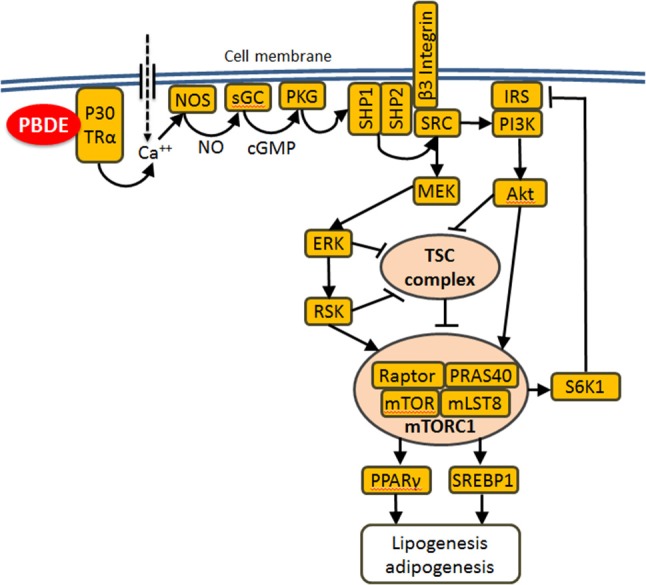Figure 6.

Proposed mechanism of metabolic reprograming by PBDE: PBDEs or their metabolites bind to the plasma membrane associated p30 TRα1 and induce an increase in intracellular Ca2+ concentration, which leads to activation of the NO-cGMP-PKGII signaling cascade and the phosphorylation and activation of the SHP1/SHP2 phosphatase complex. This complex activates SRC which in turn activates MEK-ERK and PI3K-AKT signaling. Both cascades merge on and suppress tuberous sclerosis complex (TSC), which is a potent mTORC1 suppressor. Lipogenesis and adipogenesis are regulated by mTORC1 mainly via SREBP1/2 and PPARγ transcription factors that control the expression of genes involved in fatty acid and cholesterol synthesis, lipid uptake and storage. Additionally mTORC1 directly phosphorylates/activates S6K1 which phosphorylates/suppresses IRS1 causing insulin resistance.
